Lanzarote, Canary Islands

SeaTrek
Bill and Judy Stellin
Thu 11 Oct 2007 14:32
|
Lanzarote Island. Position
28:55.029N 013:42.147W
We arrived just before dawn, entered the harbor
with no difficulty and moored
next to the reception quay waiting for the place
to open at nine. Soon after opening
we were in our berth and then bed for an extended
sleep. We had covered 434 miles
from Casablanca and 641 miles from
Ceuta. Although we have no trouble sleeping when off
watch,
the interruption of three hours on and three hours
off does take its toll. When we
start the actual crossing we will get into more of
a rhythm and probably sleep a
little more during the daylight
hours.
A good bit of the passage was under sail and
motor, although the last 150 miles were
all sailing, a good bit with the
spinnaker.
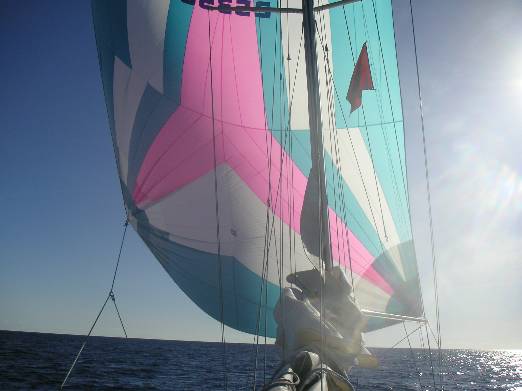 No main up because the winds were light and the main
blankets the sail.
As is usual, we seem to be visited by dolphins
every day. This was a group of over
fifty and once while they were playing along side,
at least 30 all shot out of the water
at the same time.
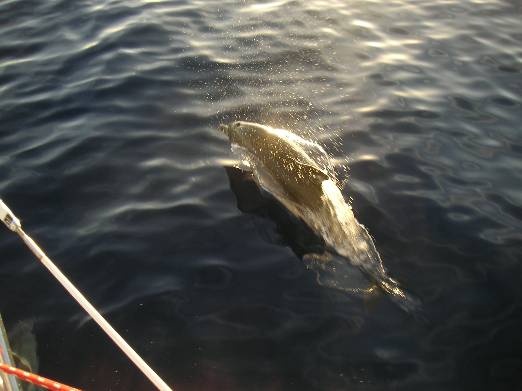 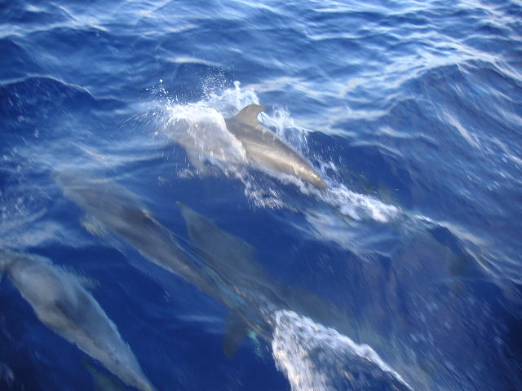 No matter how many times we see these playfull characters,
we are drawn to
the bow for the show.
Our berth is in Puerto Calero www..puertocalero.com and is a very
fancy
but affordable marina. It is a bit far from
anything, so we rented a car for two
days to tour the islands many, many
features. This entire island is considered
a biosphere. The southern part is volcanic with a
terrific tour through the
Parque Nacional de Timanfaya ( mountains of
fire.) As far as the eye can see, there is
nothing but craters, mountains with their tops
blown off, and lava. For a really good
view and idea of how vast this area is, go the
index page of this blog where the position
is shown and zoom in on the island. It looks like
what the surface of the moon or mars
must be like.
 This is from the bus window.
The tour covers over 14 kilometers by park bus
with narration in English.
It is said to be the largest area in the world
covered by lava, extinct volcanos
and craters. At the top of one of the
volcanos sits a very nice restaurant where
we had lunch. All the food is cooked on an
open grill that covers a hole deep into
the earth where only super hot air is
coming from. It is hot enough to cook the food
just like a charcoal grill.
 This is about 8 feet in diameter and the hole goes down
into the bowels of the earth.
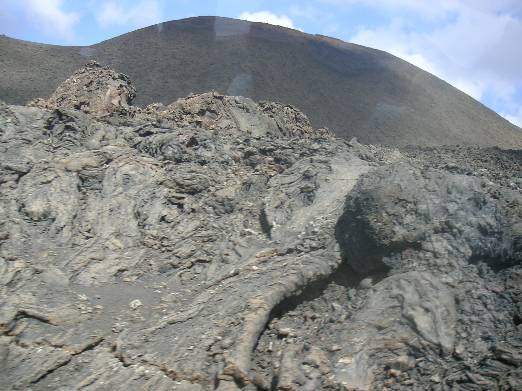 Some of the lava is taffy looking, while most is very
jagged and impossible to walk on.
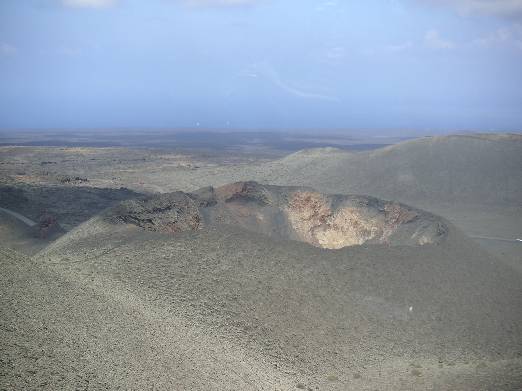 These views extend as far as the eye can see in all
directions.
Another feature is the home of Cesar Manrique and
his foundation, ( he died in 1992).
This incredible artist was born here, but left his
work all over Spain, including the wonderful
municipal pools in Ceuta which I spoke off in an
earlier journal.
From his foundation we drove to a huge cactus
garden.
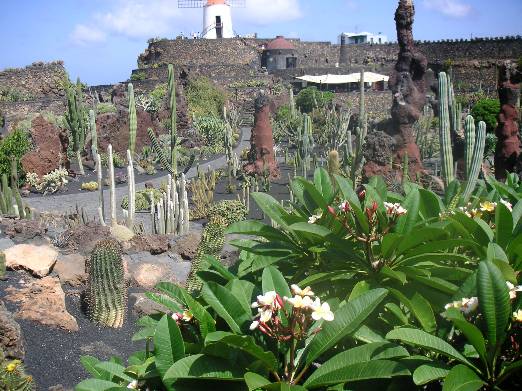  Judy is coaxing them a little closer so she can talk to
them.
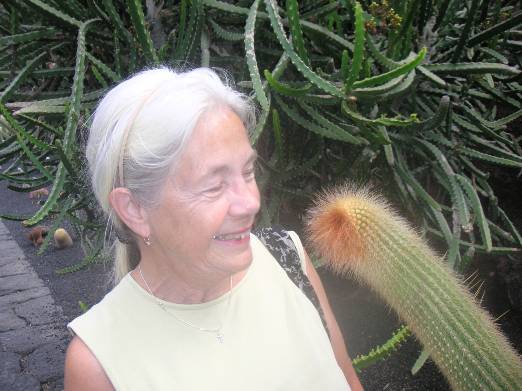 This one wants a kiss.
Wonder of all wonders, we were able to fill our
propane bottle here on the island. In mainland
Spain, it is illegal for anyone to fill a foreign
bottle and thus no one does.
It took a lot of driving and getting lost several
times, but we found the gas plant
and for the first time since 2004, have had true
propane in our own bottle instead of
the little blue "camping gaz" two and half pound
tanks that cost a fortune and only last
a few weeks. Now we have two American 10
pound bottles filled to the brim which should
last us for at least six
months.
|